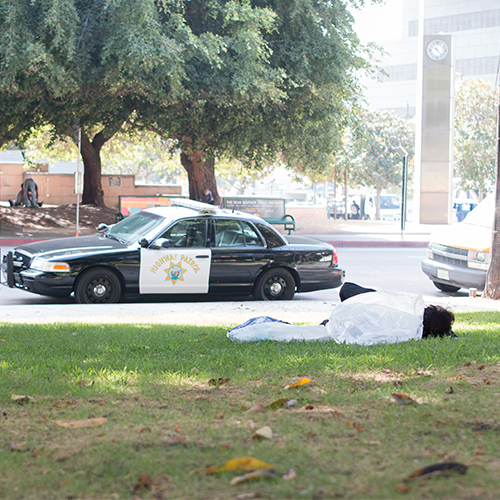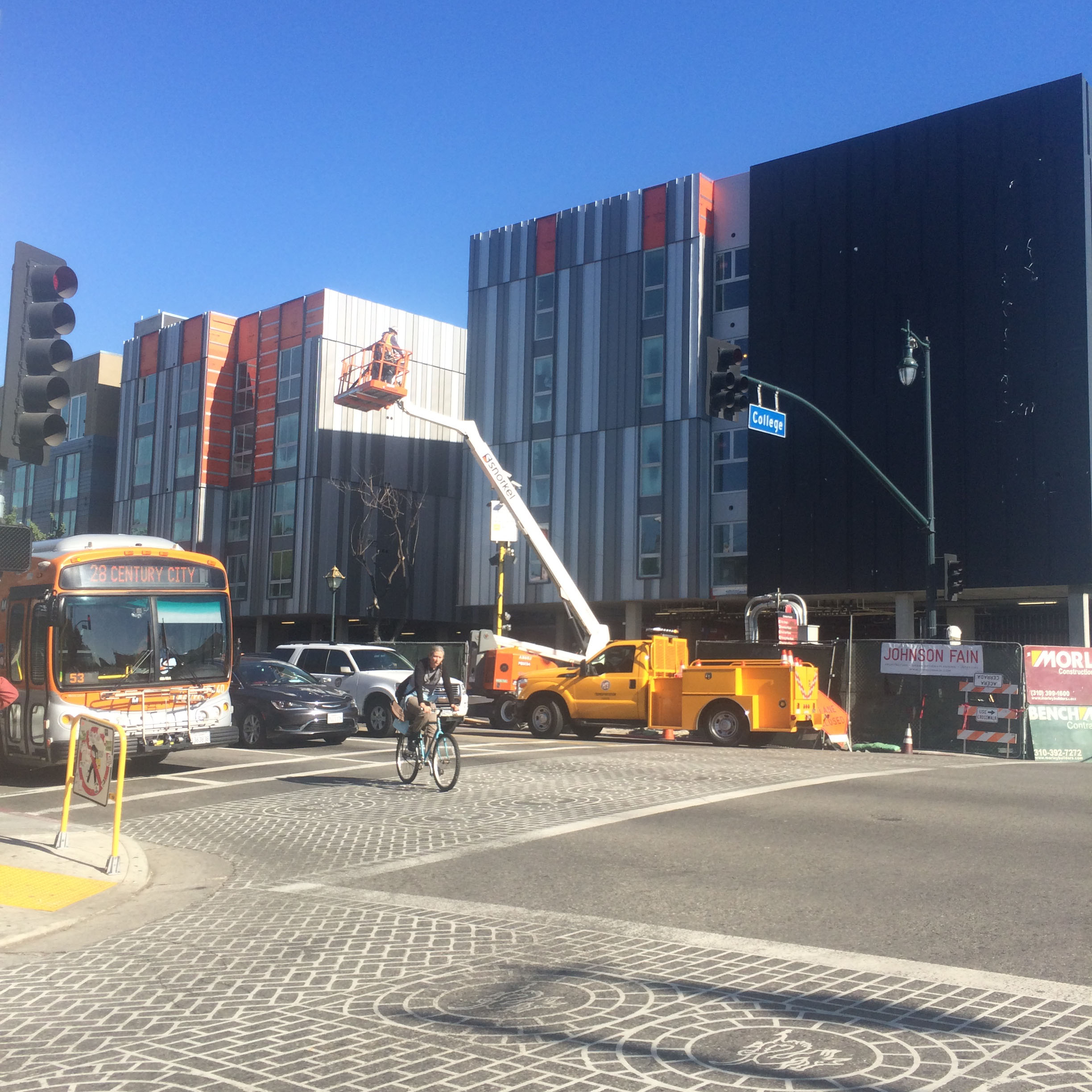LOS ANGELES -- Every Tuesday morning, the Los Angeles Police Commission welcomes in members of the community for a meeting designed to serve as a platform for open discussion between citizens and the police force.
Common people travel into the heart of downtown, marching into the Los Angeles Police Department headquarters on the corner of Main and First. They come from all over the city, from Boyle Heights and Huntington Park, South Central and Inglewood, each with a simple goal in mind: to have their voices heard.
“I just want the public to be able to talk,” Terue Williams said, who regularly attends the meetings as a supporter of Black Lives Matter (BLM).
“We shouldn’t be silenced. That’s the main thing, is just to be able to have open dialogue with our public officials to create solutions, not just have them not listen to us.”
On the surface, attending these public meetings seems simple, but each person who files through the guard-railed entrance and past the wall of onlooking police officers, through the metal detector security point and finally into the meeting room, compromises his or her workday once a week, every week.
Clearly, this group of L.A. townsfolk does not comprise your ordinary collection of citizenry.
The commissioners have found this out the hard way, as the activists typically attending the meetings have made their presence felt with a steady showing every week. As Williams alluded to, the civilians’ consistent attendance and attitude has led to palpable tension between them and the commissioners.
“They really don’t want us to be here, so we’re just making sure we keep coming and our voices are heard,” Anthony Ratcliffe said, another BLM supporter.
The activists represent a variety of groups, as factions from the Los Angeles Community Action Network, Stop LAPD Spying Coalition and the Youth Justice Coalition form key cogs in civilian representation.
The organizers outline clear goals during the public comment periods, lining up one by one for nearly every item on the agenda to speak their minds about limiting law enforcement’s use of deadly force, lifting unfair gang injunctions throughout the city and even changing the meeting time to the evening, when more people could show up after work.
However, Jamie Garcia, a member of the Stop LAPD Spying Coalition, was frank when asked if she believes significant change is coming soon on the issues she’s fighting for.
“Given the history of the police commission, I would say pretty much, no.”
An uncut look into some of the activists powering the Black Lives Matter movement in Los Angeles.
But with a long history of racial tension, the people’s frustrations with the stagnant policing practices in the city seems warranted – L.A. leads the country in 2015 with 20 police-involved killings – yet the movement’s tactics for spurning change have come under fire in recent months.
Their actions appear unruly and disorganized at times, culminating in bouts of expletive-laden shouting and frequent disruptions at meetings, such as the open community forum with Mayor Eric Garcetti in October at the Holman United Church in South L.A.
As opposed to engaging Garcetti in dialogue, the group of activists turned their backs to the mayor as he spoke to the rest of the crowd, then shouted him out of the building and surrounded his car to prevent him from leaving the event.
The organizers again turned disorderly on Tuesday, when they staged a series of disruptive skits, songs, written word and banners at the commission meeting, leading to about half the crowd being escorted out by policemen.
Their recent refusal to engage in calm, constructive dialogue with city officials has brought widespread scrutiny to the group, but members vehemently defend their strategies, claiming they have remained calm for too long.
“When you go to that place that’s supposed to be for you, like the police commission is, and you’re completely rejected over and over again, what other form of communication do you have but to be heard and to be seen?” Garcia said.
The nature of the demonstrations the organizers are undertaking requires prior planning and preparation, and the type of symbolism they are trying to convey has been an asset for social movements in the past. However, even with their persistence, their efforts are gaining very little traction in the political sphere.
Such social immobility calls into question the leadership philosophy BLM has embraced since its inception. Followers insist the campaign thrives on the notion of being “leaderful,” by instilling power into every supporter to create a full dissolution of power.
The idea of shifting their ideology and selecting a fixed figurehead has the potential to garner intensified media attention and subsequently effect significant change, but Ratcliffe is wary of such a proposition.
“There’s gonna be times when some people might be more knowledgeable about certain things, and sometimes they should be the ones to take the lead on that, but that doesn’t mean that that one person should be the ultimate leader,” he said.
“That happened in the past and they killed people like Malcolm X and Martin Luther King, and the movement started to fail. Right now you can take out a few people but you can’t stop our movement.”
In the public eye, Black Lives Matter and its allies remain imperfect crusades against the de facto segregation and inequality that have systematically crippled massive contingents of minority populations in L.A. for decades. But as part of an unsound effort or not, the people on the streets of the Southland insist there’s no more time for waiting.
“The urgency of the situation that we’re in right now — people are getting shot and killed in the streets by police — means this isn’t a joke, it’s not a game, and we need to do something,” Garcia said.


